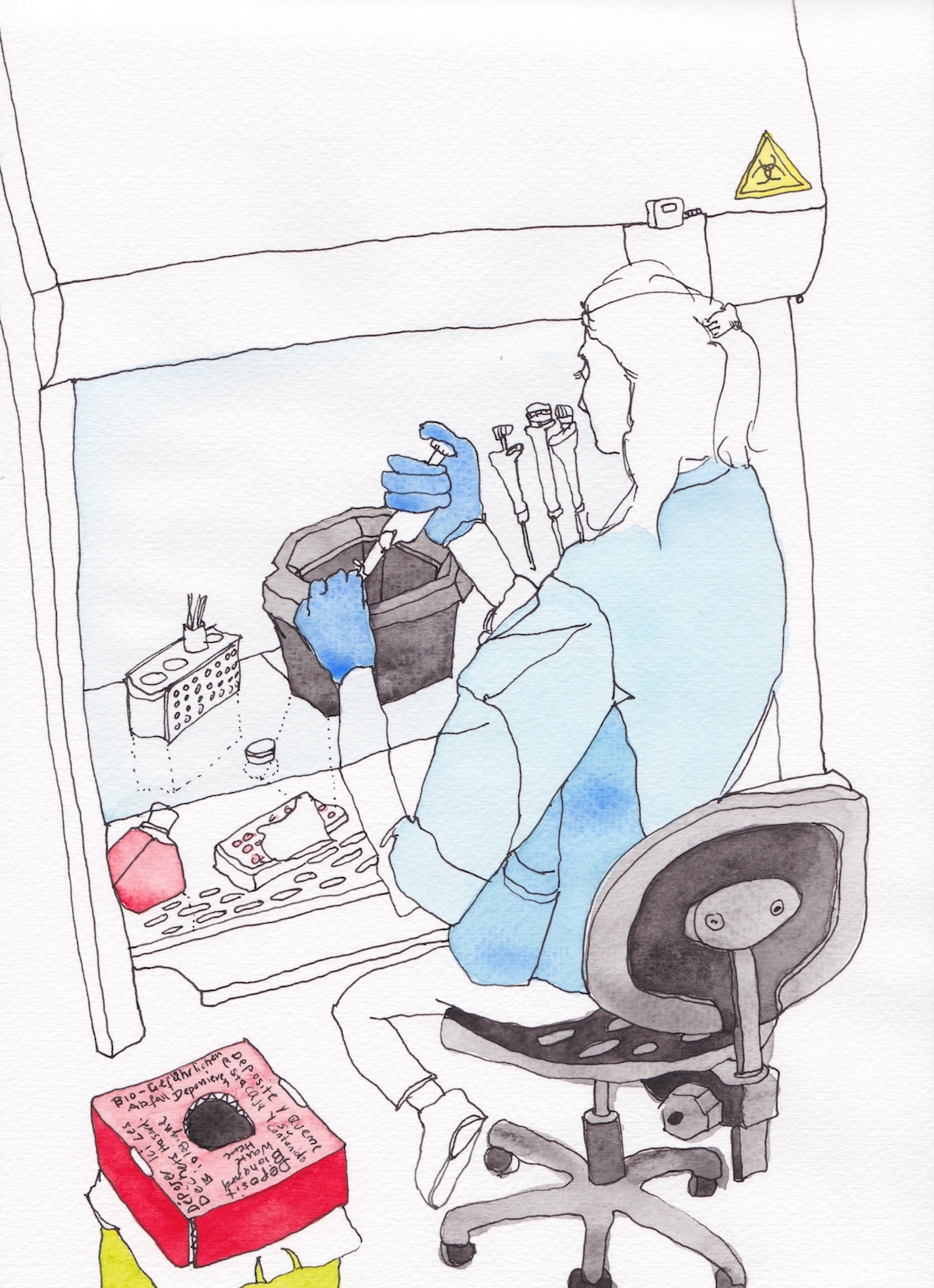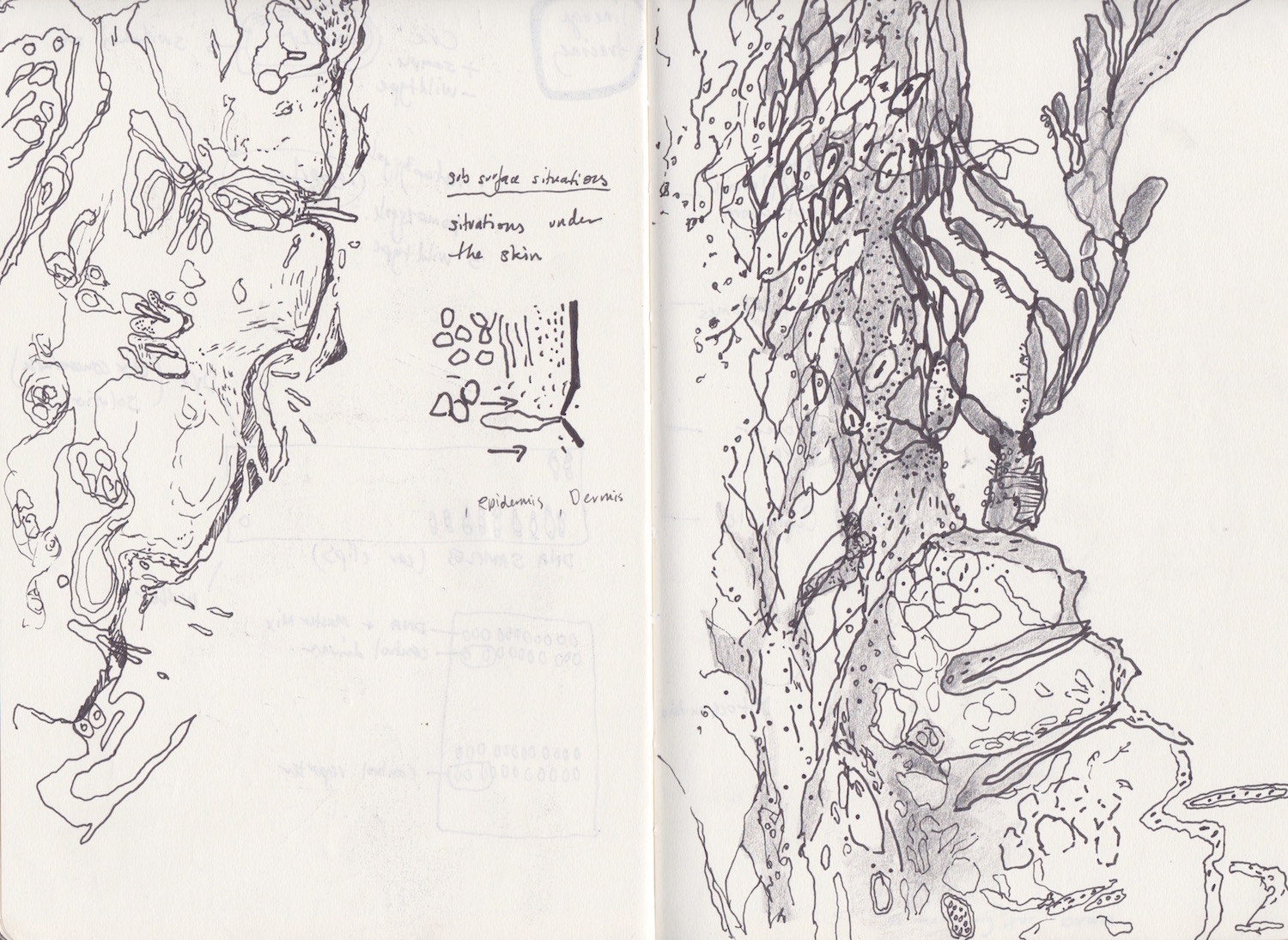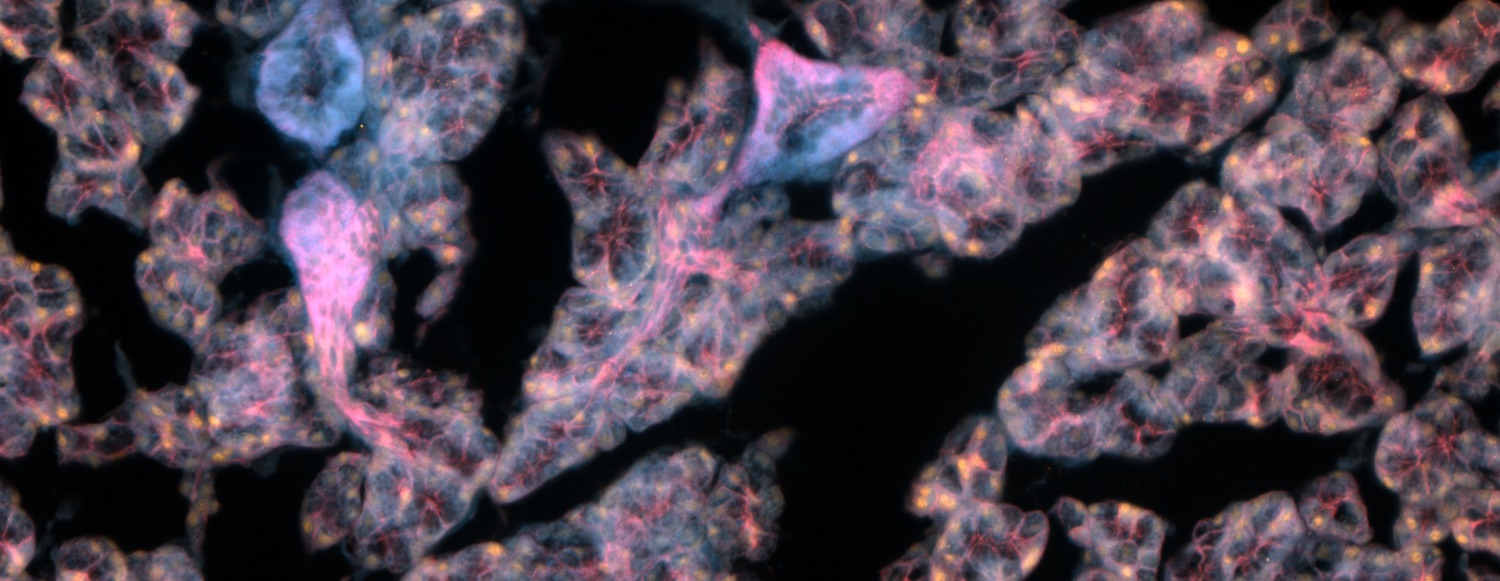 Emmerson Lab CRM: An experiment in growth and perspective When observing scientists in a research laboratory, one thing to note is that this experience is very much non-linear. There are a lot of apparent pauses in-between experiments as cells need time to be processed and ideally grow. What this means for me is that I will often begin a drawing and return to it later in the process. I begin with the most static element - the bin with four languages used to describe the disposal of bio-hazard waste - and wrap lines around the moving parts as they come and go. In this way, I am exploring drawing as an experiment too and adapting my methods and timing to suit the situation.
Emmerson Lab CRM: An experiment in growth and perspective When observing scientists in a research laboratory, one thing to note is that this experience is very much non-linear. There are a lot of apparent pauses in-between experiments as cells need time to be processed and ideally grow. What this means for me is that I will often begin a drawing and return to it later in the process. I begin with the most static element - the bin with four languages used to describe the disposal of bio-hazard waste - and wrap lines around the moving parts as they come and go. In this way, I am exploring drawing as an experiment too and adapting my methods and timing to suit the situation.
The following drawing is of Cecilia Rocchi, one of the key researchers in the Emmerson Lab. It is a collage of about three different time periods in one day located at the fume-hood inside The MRC CRM Tissue Culture Facility, a space that is super clean and well ventilated. Here she is working with a sample of about 20,000 salivary gland cells in the hope that they will grow under the right circumstances. What sounds like a large number to me is a pellet the size of a sesame seed, transparent and barely visible to the naked eye.
My drawing is strange in perspective and has me thinking about the nature of collaboration. In science as in any good team, a lab is not one person but a collection of minds bound together by trust and a common goal. I am enjoying patching together moments inside the lab and sharing them here in this subjective and temporary arrangement of matter in space and time.
Next week I am a fly on the wall inside an MDT (multi-disciplinary team) meeting, where together a team of surgeons, pathologists, oncologists, dentists and nurse specialists converse and make decisions about each individual head and neck cancer patient’s course of treatment. Another non-linear environment, another amazing team in the G-Lands, the landscape inside and outside of the salivary gland.
Thanks for reading,
Emily
You can contact/find me at:
emilyfongstudio@gmail.com
@emilyfongstudio
- To get hands on and creative with the tools of science, you can drop into an open session at the ASCUS Lab at Summerhall in Edinburgh, Scotland’s publically accessible laboratory. You can find out about their many courses and opportunities here http://www.ascus.org.uk
 Thursday, February 6, 2020 at 10:23PM
Thursday, February 6, 2020 at 10:23PM  Microscopic skin studies from the Emmerson Lab, CRM | © Emily Fong 2020
Microscopic skin studies from the Emmerson Lab, CRM | © Emily Fong 2020

